What fruit is Hawaii known for? | Top Local & Delicious Hawaii Fruits

- By
- Aparna Patel
- |
- 3 Apr, 2023
- |
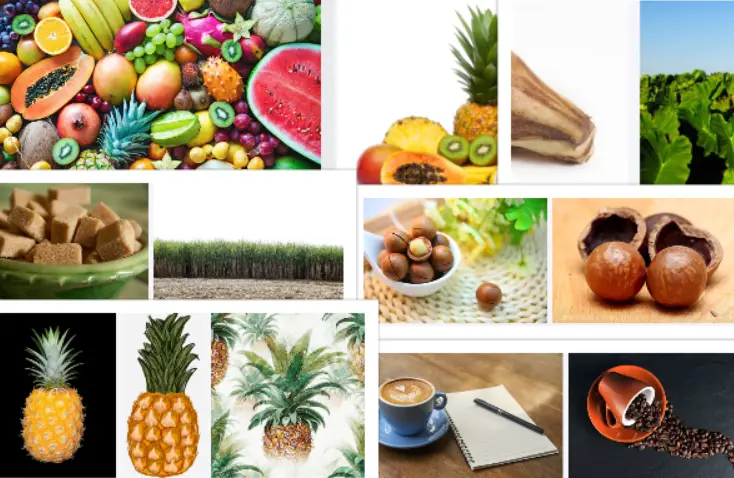
Hawaii is known for its tropical climate, crystal-clear waters, and lush vegetation. The islands’ fertile soil and ideal climate make it the perfect place for growing a wide variety of delicious fruits. From sweet pineapples to tangy lilikoi, Hawaii is home to some of the most delicious and unique fruits in the world.
In this blog post, we will explore the top local fruits that Hawaii is famous for, from its iconic pineapples to lesser-known gems like guava and papaya. Whether you are planning a trip to Hawaii or just want to learn more about the islands’ rich culinary traditions, read on to discover the top local fruits that make Hawaii a food lover’s paradise.
Hawaii is known for its delicious and unique fruits, many of which are grown exclusively in the islands’ fertile soil and tropical climate. Here are some of the top local fruits that Hawaii is famous for:
- Pineapple: Hawaii is famous for its sweet and juicy pineapples, which are grown on large plantations on the islands of Maui and Oahu. The fruit is a symbol of Hawaii’s tropical paradise and is used in everything from smoothies to desserts.
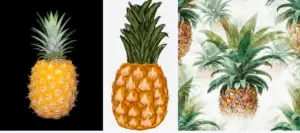 Pineapple is a tropical fruit that is famously associated with Hawaii. It has a sweet, juicy flesh and a spiky, rough exterior.In Hawaii, pineapple is mainly grown on the island of Maui, where it is a major crop and an important part of the state’s agricultural industry. The fruit is in season from May through August, with peak harvest occurring in June and July.
Pineapple is a tropical fruit that is famously associated with Hawaii. It has a sweet, juicy flesh and a spiky, rough exterior.In Hawaii, pineapple is mainly grown on the island of Maui, where it is a major crop and an important part of the state’s agricultural industry. The fruit is in season from May through August, with peak harvest occurring in June and July.
Pineapple production in Hawaii has a long and storied history. In the early 1900s, the Dole Food Company established large pineapple plantations on the island of Oahu, which helped to make Hawaii the world’s leading producer of pineapple. Today, many smaller farms grow pineapple on Maui, and the fruit is still an important part of the state’s economy.
Pineapple is used in a wide variety of dishes in Hawaii, from pineapple upside-down cake and piña coladas to savory dishes like grilled pineapple chicken. The fruit is also a popular souvenir for tourists to bring back home.
Overall, pineapple production and agriculture continue to be an important part of Hawaii’s cultural and economic identity.
- Mango: Hawaii is also known for its delicious mangoes, which are grown on the islands of Maui and the Big Island. The fruit is sweet and juicy, with a tangy flavor that makes it perfect for snacking or using in recipes.
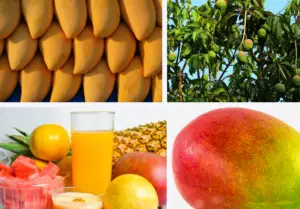
In Hawaii, mango is mainly grown on the island of Oahu, where it is a popular crop for many farmers. The fruit is in season from May through September, with peak harvest occurring in June and July.Mango production in Hawaii has been increasing in recent years, and the state is now one of the top producers of mango in the United States. Many local farmers grow mango, and the fruit is sold at farmers’ markets, grocery stores, and restaurants.Mango is used in a variety of dishes in Hawaii, from mango salsa and chutney to smoothies and desserts. It is also popular as a snack or a refreshing treat on a hot day.
Overall, mango production contributes to Hawaii’s agricultural industry and provides a delicious and nutritious fruit for locals and visitors to enjoy.
- Papaya: Papaya is another popular fruit in Hawaii, known for its bright orange flesh and sweet flavor. The fruit is often eaten fresh or used in smoothies and salads.
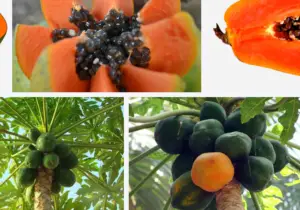
In Hawaii, papaya is mainly grown on the island of Hawaii (also known as the Big Island), where it is a popular crop for many farmers. The fruit is in season year-round, with peak harvest occurring from June through August.Papaya production in Hawaii has been steadily increasing in recent years, and the state is now one of the top producers of papaya in the United States. Many local farmers grow papaya, and the fruit is sold at farmers’ markets, grocery stores, and restaurants.Papaya is used in a variety of dishes in Hawaii, from papaya salad and smoothies to desserts and breakfast dishes. It is also a popular fruit for juicing and is known for its digestive health benefits.
Overall, papaya production contributes to Hawaii’s agricultural industry and provides a delicious and nutritious fruit for locals and visitors to enjoy.
- Guava: Guava is a tropical fruit that is popular in Hawaii, known for its fragrant aroma and sweet flavor. The fruit is often used to make jams, jellies, and drinks.
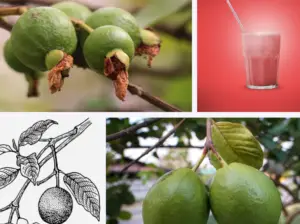
- Lilikoi: Lilikoi, also known as passion fruit, is a small fruit that is grown in Hawaii and known for its tart and tangy flavor. The fruit is often used in desserts, drinks, and sauces.
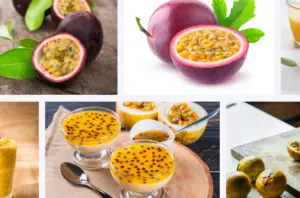
- Coconut: Although not technically a fruit, coconuts are a staple in Hawaii and are used in a variety of dishes and drinks. The sweet, nutty flavor of coconut is often associated with the islands’ tropical paradise.
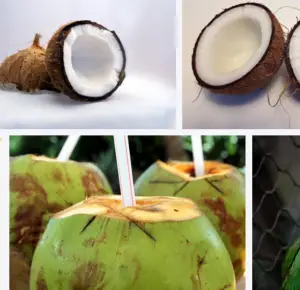
- Banana – Hawaii’s warm climate is perfect for growing bananas, which come in many different varieties and can be used in a variety of dishes.

- Avocado – Avocado trees thrive in Hawaii and produce creamy, delicious fruit that can be used in a variety of dishes.
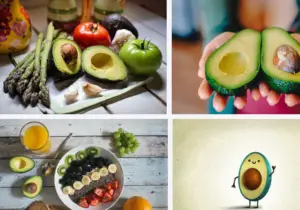 Avocado is another tropical fruit that is grown in Hawaii. It has a creamy texture and a rich, nutty flavor, and is high in healthy fats and other nutrients.In Hawaii, avocado is mainly grown on the island of Maui, where it is an important crop for many farmers. The fruit is in season from November through March, with peak harvest occurring in December and January.
Avocado is another tropical fruit that is grown in Hawaii. It has a creamy texture and a rich, nutty flavor, and is high in healthy fats and other nutrients.In Hawaii, avocado is mainly grown on the island of Maui, where it is an important crop for many farmers. The fruit is in season from November through March, with peak harvest occurring in December and January.
Avocado production in Hawaii has been increasing in recent years, and the state is now one of the top producers of avocados in the United States. Many local farmers grow avocado, and the fruit is sold at farmers’ markets, grocery stores, and restaurants.
If you’re interested in trying avocado in Hawaii, look for it at local markets or try visiting an avocado farm during harvest season. Avocado can be used in a variety of dishes, from guacamole and salads to sandwiches and smoothies.
- Lychee – Lychee trees grow well in Hawaii and produce sweet, juicy fruit with a distinctive flavor.
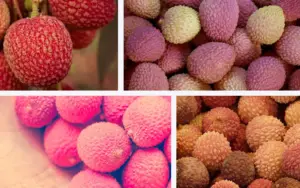 Lychee is a tropical fruit that is also grown in Hawaii. It has a rough, reddish-brown outer skin and a sweet, white, juicy flesh inside.In Hawaii, lychee is mainly grown on the island of Oahu, where it is a popular crop. The fruit is in season from May through July, with peak harvest occurring in June.
Lychee is a tropical fruit that is also grown in Hawaii. It has a rough, reddish-brown outer skin and a sweet, white, juicy flesh inside.In Hawaii, lychee is mainly grown on the island of Oahu, where it is a popular crop. The fruit is in season from May through July, with peak harvest occurring in June.
Lychee production in Hawaii has been steadily increasing in recent years, and the state is now one of the top producers of lychee in the United States. Many local farmers grow lychee, and the fruit is sold at farmers’ markets, grocery stores, and roadside stands.
If you’re interested in trying lychee in Hawaii, look for it at local markets or try visiting a lychee farm during harvest season. Lychee is a versatile fruit that can be eaten fresh, used in desserts, or added to c**ktails for a sweet and tropical flavor.
- Starfruit – Starfruit trees are easy to grow in Hawaii and produce juicy, tangy fruit that is perfect for use in salads and desserts.
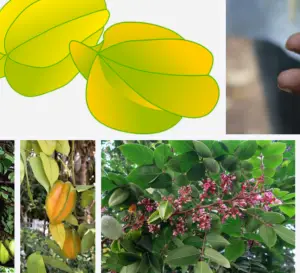 Starfruit, also known as carambola, is a tropical fruit that is grown in Hawaii. It has a distinctive star-shaped appearance when sliced, and a tangy-sweet flavor.In Hawaii, starfruit is typically grown in the warmer regions of the state, such as the island of Hawaii (also known as the Big Island) and the southern coast of Maui. The fruit is generally in season from June through February, with peak harvest occurring in the months of July and August.
Starfruit, also known as carambola, is a tropical fruit that is grown in Hawaii. It has a distinctive star-shaped appearance when sliced, and a tangy-sweet flavor.In Hawaii, starfruit is typically grown in the warmer regions of the state, such as the island of Hawaii (also known as the Big Island) and the southern coast of Maui. The fruit is generally in season from June through February, with peak harvest occurring in the months of July and August.
The production of starfruit in Hawaii is relatively small compared to other tropical fruits, such as pineapple and papaya. However, it is still an important crop for many local farmers and is used in a variety of dishes and drinks in Hawaii’s cuisine.
If you are interested in trying starfruit in Hawaii, you can look for it at local farmers’ markets or in specialty grocery stores. It can also be found in some restaurants and used in dishes such as salads, chutneys, and c**ktails.
Overall, Hawaii is known for its delicious and unique fruits, which are a testament to the islands’ rich soil, tropical climate, and vibrant culture.
Read more
- What is Hawaii known for agriculture?
- What is Hawaii known for?
- What fruit is Florida known for? | Local & Delicious Florida Fruits
- What fruit trees are native to Florida?
- What is California known for fruit?
- What is California known for agriculture?| What vegetable is California known for?
- Why are redwood trees so big?| How tall are redwood trees?
- What is Redwood National Park famous for?
- What city are the redwoods in California?
- Why do redwoods only grow in California?
FAQ:
Q: What are some of the top local and delicious fruits that are grown in Hawaii?
A: Hawaii is home to a variety of delicious fruits that are grown locally, including papaya, pineapple, mango, lychee, and passion fruit.
Q: What is unique about Hawaii’s fruits compared to other fruits?
A: Hawaii’s unique climate and soil make it an ideal location for growing tropical fruits, which have a distinct flavor and sweetness compared to fruits grown in other regions.
Q: Where can I find Hawaii’s local fruits?
A: Hawaii’s local fruits can be found at farmers’ markets, roadside stands, and in some grocery stores throughout the islands. Some fruits are seasonal, so it’s best to check with local vendors for availability.
Q: What are the health benefits of Hawaii’s fruits?
A: Hawaii’s fruits are high in vitamins, minerals, and antioxidants, making them a nutritious addition to any diet. Papaya, for example, is an excellent source of vitamin C, while pineapple contains bromelain, which aids in digestion.
Q: What are some popular ways to enjoy Hawaii’s fruits?
A: Hawaii’s fruits can be enjoyed in many ways, including sliced, diced, or blended into smoothies or juices. Some fruits, such as pineapple and papaya, are also used in savory dishes such as salads and stir-fries.
Q: Are Hawaii’s fruits expensive?
A: The cost of Hawaii’s fruits varies depending on the season and availability. However, buying locally grown fruits can often be more affordable than imported fruits.
Q: Can I bring Hawaii’s fruits back home with me?
A: Some fruits, such as papaya and pineapple, can be brought back to the mainland United States. However, it’s important to check with the USDA’s regulations to ensure compliance with quarantine rules and restrictions.
Q: Are Hawaii’s fruits sustainable?
A: Many farmers in Hawaii practice sustainable farming methods, such as using organic practices and reducing pesticide use. Buying locally grown fruits also supports sustainable agriculture and reduces the environmental impact of importing fruits from other regions.
Q: Are there any rare or exotic fruits grown in Hawaii?
A: Yes, Hawaii is home to several rare and exotic fruits, such as rambutan, durian, and dragon fruit. These fruits can be found at specialty markets and some farmers’ markets throughout the islands.
Search Posts
Latest posts
-
4 Mar, 2024
Why are there no seat belts on trains?
-
5 Mar, 2024
Why prohibit engine braking?
-
5 Mar, 2024
Passing through airport security with autism